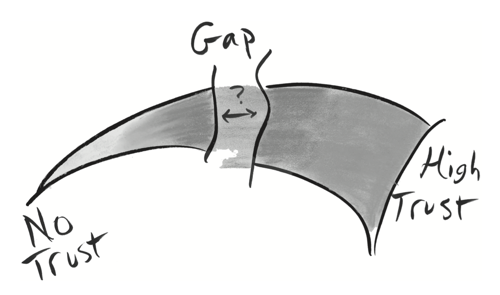First, the bad news: The Edelman Trust Barometer reports a continued general decline in how much people trust business, government, non-governmental organizations (NGO), and the media "to do what is right" based on its annual online survey of more than 33,000 respondents in 28 countries.
The good news: business is the most trusted institution compared to NGOs, government and the media and is viewed as the only institution as both competent and ethical, according to the survey, Importantly though, two-thirds of consumers and employees expect to have a seat at the table before change happens, with 50 percent of those employed saying they "are more likely now than a year ago to voice my objections to management or engage in workplace protest."
These findings highlight the mission critical role public relations plays in delivering the authenticity and distinctiveness to elevate a company's reputation and brand, bridging the trust gap in today’s world in ways that advertising cannot. Numerous studies over the years have found public relations often may be more important to building and maintaining brand value than advertising, especially for purchasing decisions related to complex products and services.
Consumers are demanding greater transparency in nearly all aspects of public life: transactions in the financial services industry; executive compensation; government spending; and growing demands for transparency for social networking platforms. In this environment, the most effective messages likely are those shared through trusted third parties or by word-of-mouth.

As third-party validation becomes more important, public relations also matters more to brand value. In a recent Nielsen report, http://www.nielsen.com/us/en/press-room/2009/advertising-builds.html researchers asked consumers what factors would increase confidence in the safety and soundness of their financial institution. Fewer than 25 percent reported that consistently seeing internet and regular advertising would boost their confidence. Nearly 45 percent of consumers reported that reading positive news stories would increase their confidence.
A recent study by Content Analytics assessed how both earned media and advertising spend contribute to brand value. By looking at the relationship between brand value, the study found that media prominence accounts for 27 percent of the variation in a brand’s value compared to only 2.3 percent for advertising. For perspective, research using similar methodology has demonstrated that high SAT scores account for only 10 to 20 percent of the variation in whether or not the first-year college student will earn a high GPA. https://www.yumpu.com/en/document/view/6645299/media-prominence-a-leading-indicator-of-brand-value-text-100
In his book “Unleashing the Power of PR,” Mark Weiner, (https://www.wiley.com/en-us/Unleashing+the+Power+of+PR%3A+A+Contrarian%27s+Guide+to+Marketing+and+Communication-p-9780787982799# reported on AT&T’s marketing mix. Comparing public relations to outbound telemarketing, direct marketing and advertising, the model revealed positive media coverage of AT&T increased the success of other marketing efforts, but the effects were not reciprocal.
Key takeaway: the more complex purchasing decisions a product requires, the more likely it is that buyers will research the category and seek information they can trust. The current cultural tensions and the economy only serve to amplify the importance of trust and marketing via third-party influencers and neutral venues. These third parties vary widely, from mainstream media to blogs, to forums to friends, but consumers are going to rely more and more on trusted third parties for advice.
What's your strategy to bridge the trust gap?



/Passle/5f6edd8e8cb62a0bec3e5fd2/SearchServiceImages/2025-09-11-17-02-51-670-68c300bb2b4d83f984228268.jpg)
/Passle/5f6edd8e8cb62a0bec3e5fd2/SearchServiceImages/2025-11-03-17-28-25-444-6908e6396964a8f1db8d3c55.jpg)
/Passle/5f6edd8e8cb62a0bec3e5fd2/SearchServiceImages/2025-12-11-03-07-32-500-693a357483358cbce8014c12.jpg)
/Passle/5f6edd8e8cb62a0bec3e5fd2/MediaLibrary/Images/2025-12-17-03-59-36-306-69422aa8e452dd14330072e0.png)